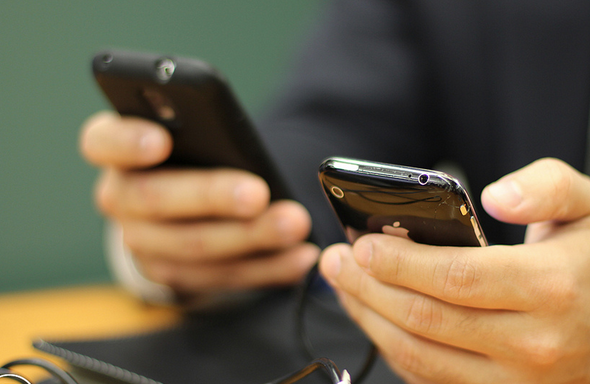Nearly 7% Of Americans Say Their Smartphone Is Their Only Way To Get Online Image courtesy of Andy Jones
We may often joke that losing our smartphone would mean being cut off from the outside world. While that’s likely an exaggeration for many consumers, a new report from The Pew Research Center finds Americans’ reliance on smartphones to stay connected with the rest of the world is very real, especially when it comes to accessing the internet.
Pew’s latest report [PDF], based on a survey conducted in October 2014, focuses not only on American’s increased use of smartphones, but also their changing preference for connecting to the internet.
Today, nearly 64% of American adults own smartphones; that’s a substantial increase of 29% from just four years ago.
![Seven percent of Pew survey respondents say they do not have broadband access at home, and also have relatively few options for getting online other than their cell phone. [Click to enlarge]](../../../../consumermediallc.files.wordpress.com/2015/04/pi_2015-04-01_smartphones_01.png?w=168&h=300)
Seven percent of Pew survey respondents say they do not have broadband access at home, and also have relatively few options for getting online other than their cell phone. [Click to enlarge]
Of the consumers with smartphones, 10% tell Pew they don’t have broadband access at home, and another 15% say they have few other options to access the internet beyond their phones. When both factors are considered, 7% of respondents say that they do not have broadband access at home, and also have relatively few options for getting online other than their cell phone.
According to the report, consumers with low income and educational attainment levels, younger adults and non-whites are especially likely to fall into the category of smartphone dependent online users.
When compared to smartphone owners who are less reliant on their mobile devices to access the internet, those who fall into the smartphone dependent category are less likely to actually own some other type of computing device, less likely to have a bank account, less likely to be covered by health insurance, and more likely to rent or to live with a friend or family member rather than own their own home.
In fact, 13% of Americans with an annual household income of less than $30,000 per year are smartphone dependent, while just 1% of Americans from households earning more than $75,000 per year rely on their smartphones to a similar degree for online access.
These economic and social factors have led to nearly half of the smartphone dependent consumers to experience disruptive access, because their cell phone service was either shut off or canceled at some point.
Additionally, 30% of smartphone dependent Americans tell Pew that they “frequently” reach the maximum amount of data that they are allowed to consume as part of their cell phone plan, and 51% say that this happens to them at least occasionally.
While the report found that a majority of smartphone users – no matter their economic situation – use their devices to follow breaking news, conduct online banking and to share information about their community, those who are considered smartphone dependent also rely heavily on the devices for job searchers.
Consumers from households earning less than $30,000 annually are twice as likely to use a smartphone to look for information about a job and more than four times as likely to use their phone to actually submit a job application than consumers from households making $75,000 annually.Although a growing number of consumers are smartphone dependent when it comes to the internet, Pew found that the most important features for many consumers include traditional uses.
Text messaging, voice and video calling and email were among the top cell phone features for all age groups of the Pew survey. However, among younger consumers – those 18 to 29 years of age – social networking, video consumption and the ability to listen to music or podcasts were especially popular features.
As for our earlier comment that losing our smartphone would be the end of the world, a narrow majority of consumers don’t actually see it that way.
Nearly 54% of the smartphone users say their phones are “not always needed,” but the other 46% say the devices are something they “couldn’t live without.”
Want more consumer news? Visit our parent organization, Consumer Reports, for the latest on scams, recalls, and other consumer issues.



![A majority of smartphone users say they don't find their devices "essential." [Click to enlarge]](../../../../consumermediallc.files.wordpress.com/2015/04/pi_2015-04-01_smartphones_04.png?w=300&h=249)